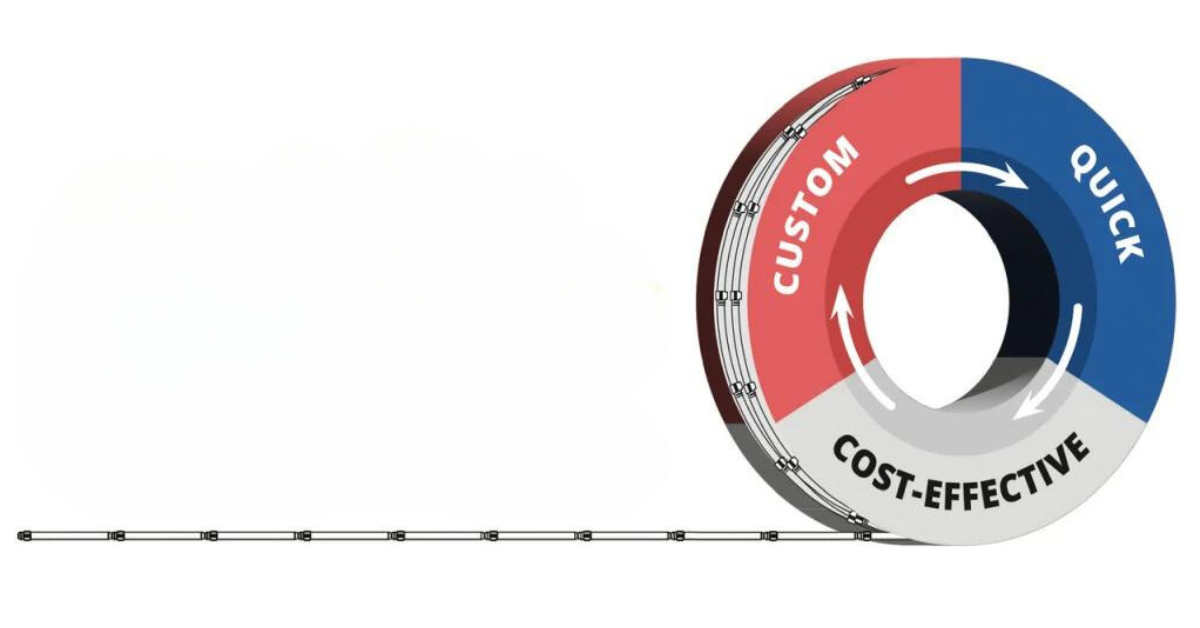What is Swaging?
Swaging is a cold-forming process that begins by pulling a continuous metal strip through a precision-engineered draw die to create a seamed tube. The tube is then gradually reduced in diameter through a series of forming cavities before being separated into individual components. This high-speed process involves shaping metal rather than removing it, making it highly efficient. It’s ideal for producing small, tubular metal parts with consistent dimensions at a low cost. Swaging can also be used with round or square wire, as well as loose or continuous wire pins.Key Benefits of Swaging:
- Cost-effective and fast
- Highly scalable and repeatable
- Uses minimal material

What is Machining?
Machining involves feeding metal rods into a turning press to produce individual interconnect pins and contacts. This method typically results in a significant amount of metal waste, which increases production costs. While machining offers great flexibility, it is generally slower and more expensive than swaging, especially for large-scale manufacturing.Key Benefits of Machining:
- Versatile for complex shapes
- Capable of achieving tight tolerances
- Supports intricate and custom designs
Swaging vs Machining: A Comparison
When choosing between swaging and machining, consider the following factors:Cost Efficiency: Swaging is more cost-effective, especially for large-volume orders, due to its speed and minimal waste. Machining, on the other hand, generates more scrap and takes longer, increasing overall costs.
Material Usage: Swaging minimizes material waste by compressing and shaping metal. Machining often requires cutting away excess material, leading to higher waste. Swaging can reduce material costs by up to 40–80%, depending on the material used.
Precision and Tolerances: Both methods offer precision, but swaging is particularly effective for standard shapes and pin geometries. Machining excels in tight tolerances but may require multiple steps to achieve the desired result.
Durability and Strength: Swaged pins benefit from the cold-working process, which enhances their strength. Machined pins depend more on the base material's properties.
When to Use Swaging
- Reducing rods, wires, and tubes
- Modifying existing products
- Creating new components with precise sizing
- Need lighter weight parts
- High-volume production
- Short lead times and tight budgets
- PCB applications
When to Use Machining
- Complex geometries
- Custom parts with tight tolerances
- Prototyping
- Heavier components required
Why Bead Uses Swaging
Bead Electronics has been utilizing swaging to manufacture custom pins since 1920. This time-tested method continues to deliver high-quality, high-precision pins at a fraction of the cost of machined alternatives. For example, our hollow pins weigh 63% less than solid machined pins but maintain the same mechanical and electrical performance. With a quick turnaround time of just two weeks, swaging is an efficient and reliable choice for many of our customers. Learn more about our swaging process, which has been in use for over 100 years!Metal Screw Lid Machine,Screw Cap Making Machine,Screw Cap Production Lines,Aluminum Screw Cap Making Line
Zhoushan Golden Wing Machinery Co., Ltd. , https://www.goldenwingmachines.com